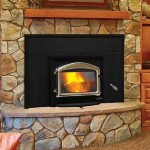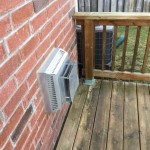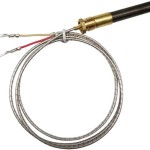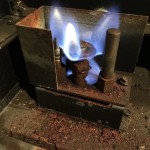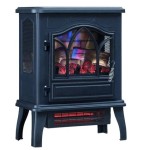How To Fix A Brick Fireplace
A brick fireplace is often a focal point of a room, providing warmth and aesthetic appeal. However, over time, brick fireplaces can develop issues such as cracks, spalling, staining, and mortar joint deterioration. Addressing these problems promptly is crucial to maintain the fireplace's structural integrity and appearance. This article provides a comprehensive guide on how to fix a brick fireplace, covering common issues and detailing the necessary steps for effective repair.
Diagnosing the Problem
Before initiating any repair work, a thorough inspection of the fireplace is essential. This diagnostic step allows for accurate identification of the problem's scope and helps determine the most appropriate repair methods. Examining both the interior and exterior of the fireplace is necessary, paying close attention to the brickwork, mortar joints, firebox, and chimney.
Cracks in the brickwork can range from hairline fractures to more substantial fissures. Hairline cracks are often cosmetic, but larger cracks may indicate structural issues. Spalling, the crumbling or flaking of brick surfaces, is another common problem, usually caused by water absorption and freeze-thaw cycles. Discoloration, such as soot stains or efflorescence (a white, powdery deposit), can also detract from the fireplace's appearance. Mortar joints, the areas between the bricks, are particularly vulnerable to deterioration over time. Cracks, crumbling, and missing mortar are common issues that require addressing.
Documenting the extent of the damage through photographs or notes is highly recommended. This documentation serves as a reference point during the repair process and assists in ensuring that all identified issues are properly addressed. Prior to beginning any work, ensure appropriate safety measures are in place, including wearing safety glasses, gloves, and a dust mask, especially when working with mortar or chipping away damaged brick.
Repairing Mortar Joints (Repointing)
Repointing is the process of removing damaged mortar and replacing it with new mortar. This is often necessary when the mortar joints have cracked, crumbled, or eroded, allowing water to penetrate the brickwork. Proper repointing is vital for maintaining the structural integrity and preventing further damage to the fireplace.
The initial step involves carefully removing the damaged mortar to a depth of approximately twice the width of the mortar joint. This can be accomplished using a cold chisel and a hammer, or for larger projects, a specialized mortar rake or angle grinder with a diamond blade. Exercise caution to avoid damaging the surrounding bricks. The objective is to remove the deteriorated mortar without chipping or cracking the adjacent bricks.
After removing the old mortar, thoroughly clean the joints with a brush and water to remove any dust, debris, or loose particles. This ensures proper adhesion of the new mortar. Allow the joints to dry slightly before applying the new mortar. The mortar should be a type specifically designed for brickwork and compatible with the existing mortar. A Type N mortar is typically recommended for general-purpose brickwork, but consulting a professional is advisable to determine the most suitable type for a particular fireplace.
Mix the mortar according to the manufacturer's instructions, ensuring a consistent and workable consistency. Apply the mortar using a pointing trowel, pressing it firmly into the joints to ensure full contact with the brick surfaces. Overfill the joints slightly, then allow the mortar to set for a short period until it becomes thumbprint-hard. Use a jointing tool to create a smooth, consistent finish that matches the existing mortar profile. This step is crucial for achieving a professional and aesthetically pleasing result. Finally, brush away any excess mortar and keep the repaired area damp for several days to allow the mortar to cure properly. Curing involves regularly misting the mortar with water to prevent it from drying out too quickly, which can weaken the mortar.
Repairing Cracked or Spalled Bricks
Cracked or spalled bricks necessitate a different approach compared to mortar joint repair. Minor cracks may be patched, while severely damaged bricks often require replacement. The decision depends on the extent and severity of the damage.
For hairline cracks, a masonry crack filler can be used. Clean the crack thoroughly and apply the filler using a putty knife, pressing it into the crack to ensure complete coverage. Smooth the surface and allow the filler to dry according to the manufacturer's instructions. Once dry, the filled area can be painted or stained to match the surrounding brickwork.
For spalled or severely cracked bricks, replacement is the preferred solution. Carefully remove the damaged brick using a cold chisel and hammer. Take care to avoid damaging the surrounding bricks. Once the damaged brick is removed, clean the area thoroughly, removing any old mortar or debris. Apply a layer of mortar to the back of the replacement brick and the surrounding area in the fireplace. Carefully position the replacement brick, ensuring it is level and aligned with the adjacent bricks. Press the brick firmly into place, and then remove any excess mortar with a trowel. Allow the mortar to cure as described in the repointing process.
When selecting replacement bricks, matching the color, size, and texture of the existing bricks is crucial for maintaining the fireplace's aesthetic appearance. This may require sourcing bricks from a specialized supplier or salvaging bricks from a similar structure. If a perfect match is unattainable, consider using a brick with a similar texture and color, and then applying a masonry stain to blend the new brick with the existing brickwork.
Addressing Staining and Discoloration
Staining and discoloration can detract from the appearance of a brick fireplace. Soot stains, efflorescence, and other types of discoloration can be addressed using appropriate cleaning methods and products.
Soot stains are often caused by incomplete combustion and the accumulation of creosote. Begin by using a wire brush to remove loose soot and debris from the brick surface. Prepare a cleaning solution consisting of water and a mild detergent, such as dish soap or a specialized masonry cleaner. Apply the solution to the stained area using a sponge or brush, and scrub gently to remove the soot. Rinse the area thoroughly with clean water and allow it to dry. For stubborn soot stains, a stronger cleaning solution, such as trisodium phosphate (TSP), may be necessary. However, TSP is a strong chemical and should be used with caution, following the manufacturer's instructions and wearing appropriate protective gear.
Efflorescence, the white, powdery deposit on the brick surface, is caused by soluble salts migrating to the surface and crystallizing. Dry brushing can remove light efflorescence. For heavier deposits, use a solution of water and muriatic acid, diluted according to the manufacturer's instructions. Muriatic acid is a corrosive substance and should be handled with extreme care, wearing gloves, eye protection, and protective clothing. Apply the solution to the affected area using a brush, allow it to sit for a few minutes, and then scrub the area thoroughly. Rinse the area thoroughly with clean water to remove any residual acid.
After cleaning, consider applying a masonry sealant to the brick surface. This sealant will help to prevent water absorption and future staining. Choose a breathable sealant that allows moisture to escape, preventing moisture buildup within the brickwork. Apply the sealant according to the manufacturer's instructions.
Preventative Measures
Preventative maintenance is essential for prolonging the life of a brick fireplace and minimizing the need for future repairs. Regular inspections, cleaning, and proper usage can help to prevent many common issues.
Inspect the fireplace regularly for signs of damage, such as cracks, spalling, or mortar deterioration. Address any issues promptly to prevent them from worsening. Clean the fireplace regularly to remove soot, ash, and debris. This helps to prevent staining and improves the fireplace's appearance. Have the chimney inspected and cleaned annually by a qualified professional to remove creosote buildup, which is a fire hazard.
Use seasoned firewood for burning in the fireplace. Seasoned firewood burns more cleanly and produces less soot than unseasoned wood. Avoid burning trash, paper, or other materials in the fireplace, as these can produce excessive soot and creosote. Ensure that the fireplace damper is functioning properly. A properly functioning damper helps to regulate airflow and prevent drafts. Consider installing a chimney cap to prevent rain, snow, and debris from entering the chimney. This can help to prevent water damage and blockage.
By following these steps, a brick fireplace can be effectively repaired and maintained, ensuring its longevity and continued aesthetic appeal. While some repairs can be performed as DIY projects, consulting with a qualified masonry professional is recommended for complex or structurally significant repairs.

Easily Solve These Common Chimney Repair Problems Chimneysaver

16 Red Brick Fireplace Makeover Ideas

How To Plaster A Brick Fireplace So Much Better With Age

10 Gorgeous Ways To Transform A Brick Fireplace Without Replacing It Hometalk

How To Fix Crumbling Chimney Mortar 13 Steps

How To Repair A Brick Chimney

How To Plaster A Brick Fireplace So Much Better With Age

Brick Fire Box Repair

How To Plaster A Brick Fireplace So Much Better With Age

10 Gorgeous Ways To Transform A Brick Fireplace Without Replacing It Hometalk
Related Posts

